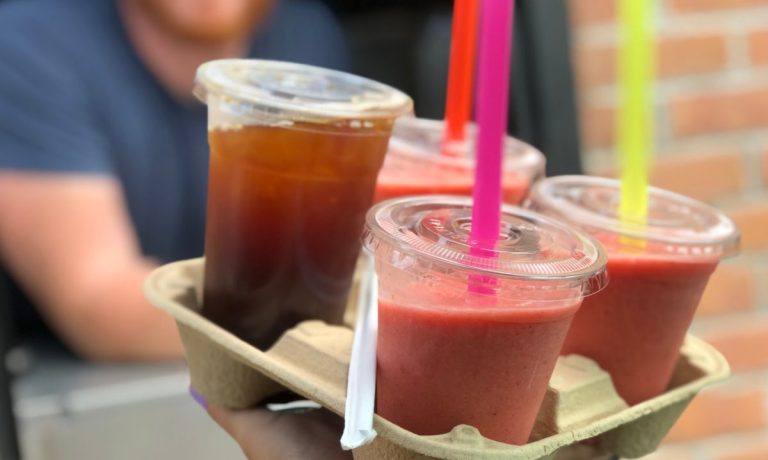
Olo, in its attempt to touch all restaurant transactions, is going after drive-thru orders.
The restaurant-focused B2B software-as-a-service (SaaS) platform shared Wednesday (Feb. 22), on a call discussing its fourth quarter 2022 financial results, that it is looking to dramatically increase its reach by powering drive-thru and on-premise restaurant sales.
“In the past year, we’ve moved into drive-thru and on-premise categories that represent roughly 38% and 24% of overall restaurant transactions respectively, more than doubling our serviceable footprint,” founder and CEO Noah Glass said. “Currently, nearly 100% of drive-thru and on-premise transactions are analog, and as Olo moves into both on- and off-premise as a focus, we have a great opportunity for Olo to unlock the path to digitize 100% of transactions.”
Certainly, these on-site transactions represent a significantly greater share of total restaurant sales than the digital channels that have largely been been Olo’s focus until now. Research from PYMNTS’ study “The 2022 Restaurant Digital Divide: Restaurant Apps And Websites In The Spotlight,” which draws from a survey of nearly 2,000 U.S. consumers, finds that 16% of consumers primarily order food via restaurants’ direct ordering channels such as their website or their app. Meanwhile, only half that share (8%) stated that they mainly order food via third-party aggregator.
With the two channels collectively making up less than a quarter of total restaurant orders, the turn to on-premise and drive-thru makes sense, given Olo’s stated goal of going from “digital primacy to digital entirety” in the restaurant industry, as relayed to PYMNTS’ Karen Webster in an interview.
Still, while the shares of total restaurant orders that digital channels comprise may be relatively small compared to in-person ordering, they are on the rise, with younger consumers especially seeking out connected convenience. Research from the latest edition of PYMNTS’ ConnectedEconomy™ report, “The ConnectedEconomy™ Monthly Series: Meet The Zillennials,” which draws from a November survey of a census-balanced panel nearly 4,000 U.S. consumers, reveals that 69% of the Gen Z population and 71% of millennials engage digitally with restaurants.
Additionally, Olo has also been working on leveraging saved payment information to drive efficiency for restaurants and improve the payment experience for consumers. Earlier this month, the company announced that it was expanding its Borderless payment capability, which offers stored credentials and data-gathering capabilities across brands.
Indeed, consumers seek out the option to pay for their restaurant purchases with saved information where available, as research from PYMNTS’ study “How We Pay Digitally: Stored Credentials Edition,” created in collaboration with Amazon Web Services (AWS), reveals.
The study, which drew from a survey of more than 2,100 U.S. consumers, found that 62% had made digital restaurant purchases with stored credentials in the previous month, while only 56% entered their credentials manually.
“Borderless capabilities simplify the checkout process for guests by eliminating the need to create or remember passwords or manually enter credit card information at every purchase,” Glass said on the call. “In addition to helping restaurants meaningfully increase basket conversion, guest retention and visit frequency, Borderless enhances the guest experience and de-anonymizes the transactions by linking them to guest profiles.”